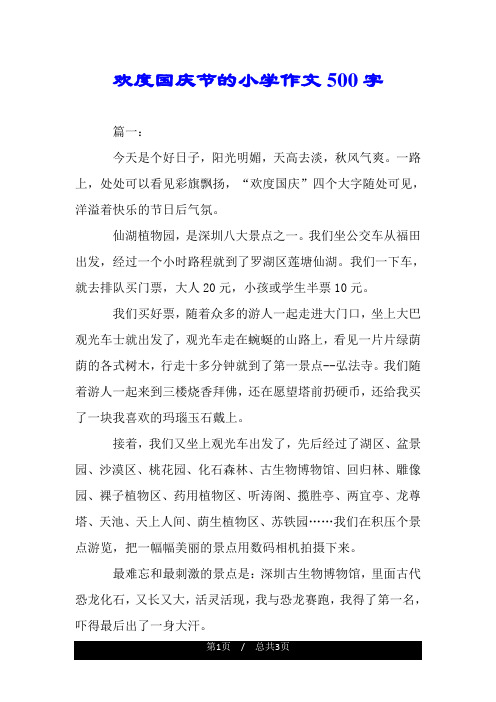介绍北京的英语作文带翻译(北京英语作文及翻译)
Beijing: A Tapestry of History, Culture, and Modernity
Beijing, the capital city of China, is a place where ancient history intertwines with modern advancements. This vibrant metropolis is not only the political center of the nation but also a cultural and economic powerhouse. In this essay, I will introduce Beijing's rich history, its remarkable cultural heritage, and its rapid development as a modern city. Through specific examples and detailed explanations, we will explore why Beijing is a must-visit destination for anyone interested in the beauty and complexity of China.
The Historical Essence of Beijing
One cannot speak of Beijing without mentioning its historical significance. As the capital for over three millennia, Beijing has witnessed the rise and fall of numerous dynasties. From the Liao Dynasty to the Yuan, Ming, and Qing Dynasties, each era has left an indelible mark on the city's landscape and identity.
Take, for instance, the Forbidden City, also known as the Imperial Palace. It served as the residence of emperors during the Ming and Qing Dynasties. This majestic palace complex, with its ornate architecture and sprawling courtyards, stands as a testament to the grandeur of imperial China. Today, it is a UNESCO World Heritage Site and attracts millions of visitors from around the globe who wish to step back in time and imagine the lives of emperors long gone.
Another iconic example is the Great Wall of China, stretching over 5,000 miles and built to protect the northern borders. This monumental structure snakes through the mountains surrounding Beijing, offering stunning views and a sense of awe at human achievement. Standing on the Great Wall, one can easily understand why it is considered one of the Seven Wonders of the World.
Cultural Treasures and Traditions
Beyond its historical landmarks, Beijing boasts a wealth of cultural traditions that continue to thrive in the modern era. Peking Opera, a unique art form combining music, singing, mime, and acrobatics, remains a beloved pastime for locals and tourists alike. With its elaborate costumes, intricate face painting, and captivating performances, Peking Opera offers a glimpse into China's artistic soul.
The hutongs, narrow alleys and courtyards that crisscross the city, are another cultural treasure. Walking through these labyrinthine passageways, one can find hidden temples, traditional teahouses, and quaint shops selling handicrafts and local delicacies. The hutongs embody the essence of old Beijing, providing a stark contrast to the towering skyscrapers that dominate the cityscape.
Temple of Heaven, originally built in 1420, is yet another cultural gem. It was where emperors of the Ming and Qing Dynasties would offer sacrifices to heaven and pray for good harvests. Its circular Mound Altar and Hall of Prayer for Good Harvests symbolize the Chinese cosmological belief in harmony between heaven and earth. Today, it is a popular park where people gather to practice tai chi, enjoy classical music performances, and simply relax amidst the serene surroundings.
Embracing Modernity
While steeped in tradition, Beijing is also a city that embraces modernity with open arms. In recent decades, it has undergone a remarkable transformation, becoming a global hub for business, innovation, and technology.
The Beijing Olympic Park, a legacy of the 2008 Summer Olympics, is a shining example of this modernization. It houses the iconic Bird's Nest stadium and the Water Cube aquatics center, both architectural marvels that have become symbols of Beijing's forward-thinking spirit. The park is now a vibrant recreational area, hosting concerts, exhibitions, and sporting events throughout the year.
In terms of transportation, Beijing has one of the most extensive and efficient subway systems in the world, connecting every corner of the city and beyond. The addition of high-speed trains has made travel to neighboring cities like Tianjin and Hebei more convenient than ever before. Moreover, initiatives to promote clean energy, such as electric buses and bike-sharing programs, have contributed to a greener and more sustainable urban environment.
Beijing's skyline is also rapidly evolving, with futuristic skyscrapers like the CCTV Headquarters designed by architect Rem Koolhaas and the China World Trade Center Tower adding a contemporary edge to the city's profile. These structures stand alongside historic landmarks, creating a unique juxtaposition that encapsulates Beijing's journey from ancient times to the present day.
Conclusion
In conclusion, Beijing is a city that seamlessly blends its storied past with a dynamic future. Its historical sites, cultural traditions, and modern advancements make it a fascinating destination for travelers seeking to experience the best of what China has to offer. Whether you're strolling along the Great Wall, exploring the depths of the Forbidden City, savoring Peking duck in a traditional hutong, or marveling at cutting-edge architecture, Beijing promises an adventure that transcends time and space. As one of the world's great capitals, Beijing continues to inspire and captivate all who visit, inviting them to uncover the layers of its rich heritage and witness its ongoing evolution into the future.




